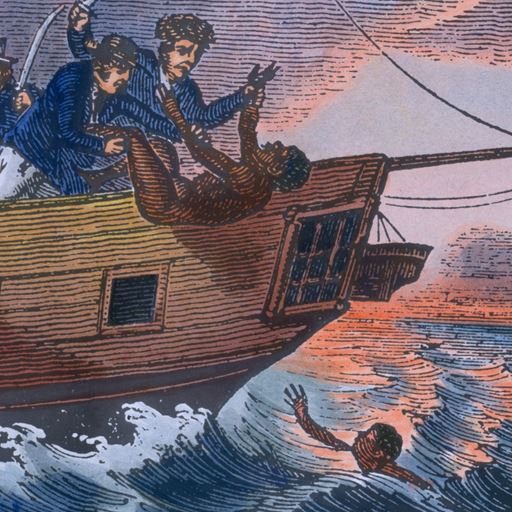Impact: Reinventing slave trade teaching

The tearing down of Bristol’s statue of slave trader Edward Colston in 2020 showed just how live and controversial Britain’s role in the slave trade remains.
A play about 130 slaves murdered on the slave-ship Zong in 1781 and on whom insurance was claimed, offered the chance to take a more creative approach to expressing slave trade history to the public and to schoolchildren. A Peril of the Sea and its linked teaching resources have proved so successful that it has been provided to almost 200 schools and is supporting teacher training at a national level.
The challenge
Communicating the history of the slave trade to the public and in schools, with all its brutality and dehumanisation, in a way that is accessible and respectful, has long been a challenge.
Sensitivity, accuracy, inclusivity and familiarity with the primary sources were urgently needed and these have been provided in the shape of A Peril of the Sea, a play based on the research of historian Professor Jeremy Krikler.

What we did
Professor Krikler has been studying slave trade history for many years. In a 2007 article he explored the pivotal role played by Lord Mansfield, the Chief Justice, who ensured no legal precedents were set in the wake of the Zong massacre that would disrupt England’s slave trade.
A later article in 2012 showed how the fate of the Zong slaves was the logical end-product of a terrible process of dehumanisation and desensitisation.
Professor Krikler realised the dramatic potential of his research and the need to find a creative way for wider audiences to engage with its issues. A Peril of the Sea emerged from his desire to show the ethical conflicts and human trauma of the Zong story.
After the play was staged, Professor Krikler worked with educationalists and his work was adapted as a resource for schools and for teacher training.
A filmed scene from the play and exercises help students talk through issues. For example, pupils match excerpts from the play with related facts and quotes from primary sources.
What we changed
This novel teaching method changes the way children can learn about slave trade history. It ensures pupils learn in an environment which encourages empathy and inclusivity, and where they learn that history can always be reinterpreted while they advance their grasp of key historical skills.
The resource has been provided to 187 secondary schools in Essex and Suffolk, with a teacher commenting that it is “a more accessible/interesting way to present information” and that the play serves as “an example to future historians [of] how 18th century slavery was perceived in the 21st century”.
"The rigorous research base behind the play and its evocative representations show educators a proper connection between empathy and evidence."
Teachers have also commented that it has helped pupils overcome the “preconception that the past is in some way ‘final’ and cannot be reinterpreted.”
The next generation of history teachers are benefitting too. The play and associated resources have been embedded in a Historical Association Teacher Fellowship (HATF) programme and will feature in a forthcoming book, by the HATF team, on teaching the transatlantic slave trade.
The University College London Institute of Education PGCE programme uses it as well, with 50 trainee teachers encouraged to incorporate the play into their teaching in placement schools each year.
"The play was very vivid and has left a lasting impression on me, including what steps can be taken to end modern slavery."
One Institute of Education specialist said: “The place of historical empathy in history education has been hard to navigate in recent decades, with an antipathy even to the term itself…The rigorous research base behind the play and its evocative representations show educators a proper connection between empathy and evidence.”
Public understanding too has been enhanced with hundreds of people seeing the play at the University’s Lakeside Theatre and the Bloomsbury Theatre in London.
Audience feedback showed that 96% of respondents felt the play had deepened their understanding of the slave trade with one commenting it had “brought to life in brilliant and macabre detail the horrors of the Atlantic crossing, the full psychic horror of people seen as property, and the range of people complicit.”
A Peril of the Sea may be a story rooted in the past but, as one theatre-goer has commented, it has a lot to offer 21st century audiences: “The play was very vivid and has left a lasting impression on me, including what steps can be taken to end modern slavery.”